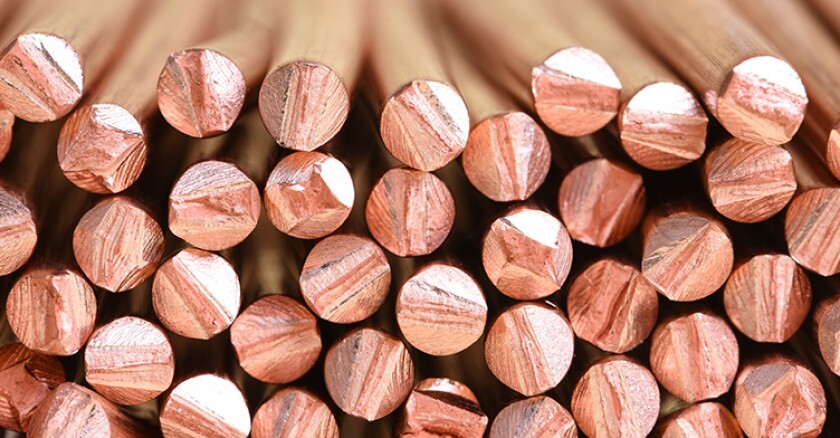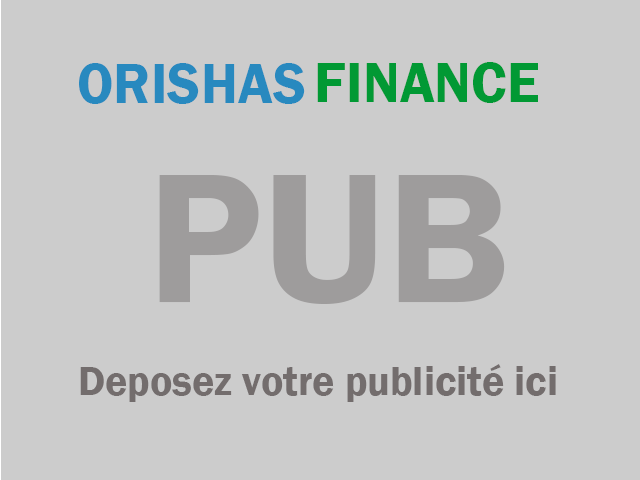 Les actualités de la BRVM en Flux RSS
Les actualités de la BRVM en Flux RSS
Nous agrégeons les sources d’informations financières spécifiques Régionales et Internationales. Info Générale, Economique, Marchés Forex-Comodities- Actions-Obligataires-Taux, Vieille règlementaire etc.
Enjoy a simplified experience
Find all the economic and financial information on our Orishas Direct application to download on Play StoreA criminologist, Pierre Delval is a former advisor for the fight against counterfeiting to the Parliamentary Assembly of the Council of Europe and an expert for the United Nations. He is the author of “False and Fraud: the international criminality of false documents”. His columns published in Financial Afrik focus on security aspects and compliance issues in Finance.
Without a doubt, Africa is one of the largest diamond reserves in the world. Beyond Australia, Canada or Russia, the international financial sector knows that the Democratic Republic of Congo, Botswana and South Africa between them hold hundreds of million carats. In addition to these three key countries, there are Sierra Leone, Lesotho, Angola, Namibia, Ghana and Zimbabwe. Unfortunately, by denial or not, all these countries are unaware that their soil, so rich in time, will be worth almost nothing tomorrow if nothing is done today to save it. Explanations.
Such wealth should have long since protected these countries from want. Yes, but here we are, the mining communities are far from benefiting from the riches of their basements, and even less from the countries that shelter them. Very clearly, the diamond sector is characterized by its opacity and by significant leakages of sums of money. Hundreds of millions of US$ from the production of these precious minerals are diverted each year through financial arrangements. Some criminologists even speak of 2 billion US$ of rough stones marketed under the cloak to end up, cut, in the most beautiful jewelers in the world. The differences are thus colossal between the value of diamonds, declared or not, and that at which the gems are sold on the international market.
If the legal exploitation of diamonds is not bad in itself - since it should contribute to the development of many suffering countries - it often maintains in spite of itself this market of "blood diamonds" which finance armed conflicts, sometimes certain cells terrorists, and prevent fiscal transparency and the institutionalization of production. The identity of the people who really control the more or less legal companies in the diamond sector is obviously known, but kept secret by widespread corruption and carefully hidden behind multiple limited companies registered in tax havens.
De Beers, the white knight
All this suspicion around the diamond obviously tarnishes the image of this fascinating stone. Its value, for twenty years, suffers and crumbles over the scandals. However, nothing really stands in the way of these practices. If diamond crime continues to run rampant, another threat is further contributing to the diamond's value collapse. De Beers, a South African diamond conglomerate, master of the market for many years, has recently flooded all places in the world with “lightboxes”, these synthetic gems capable of democratizing the jewelery sector. Coming straight from laboratories, these "cultured stones" resulting from an artificial mixture of carbon and transition metals under very high pressure and temperature, look just like natural ones. The only noticeable difference is its price, ten times cheaper than a mineral diamond.
Officially, De Beers presents itself as the white knight of the world diamond market. Thanks to synthetic stones, the gem trade is more transparent and respectful of nature. In reality, far from these marketing considerations, the South African company has felt the tide turn. The less strict sales conditions, following a global overstock of precious stones, were supposed to alleviate the difficult economic context of volatile stock markets and successive trade tensions between the United States and China. As supply and demand no longer met, De Beers quickly realized that it had to fold up the canvas. The figures were confirmed in 2019.
The South African producer and trader shows a 17% drop in turnover in the first half of the year. Its Russian competitor Alrosa is experiencing the same difficulties. The synthetic stone then becomes a strategic alternative capable both of meeting the expectations of international institutions in terms of good governance on the world gem market and of maintaining a turnover, strongly impacted by the global overstock of natural diamonds. The result was not long in coming. Mines all over the world are closing one after another or slowing down their extraction. For African producers, the situation is becoming catastrophic.
For the world market, the price of natural diamonds is collapsing and its image as a safe haven is shattered. Worse still, the synthetic diamond is an inexhaustible source of inspiration for criminal organizations who see in this product a new El Dorado for the online trade in villainous counterfeits. A final scourge could deal the deathblow to the most fragile producer states. The economic consequences of the COVID-19 pandemic are catalyzing the more than worrying situation in the gemstone trade. In March 2020, the demand for rough and polished diamonds showed a sharp decline. February's uncertainty was followed by severe restrictions, even border closures and quarantine measures around the world. The Russian Alrosa, world leader in diamond mining, is experiencing a drop in production of nearly 50%. African operators obviously suffer the same effects.
Covid-19: an opportunity for the mineral diamond?
Paradoxically, COVID-19 could also be a major opportunity for those who know how to exploit it. While the global stock markets are in crisis and the barrel of oil is collapsing to its lowest level, gold is playing its role as a safe haven more than ever. Diversifying investments, especially towards precious metals, is an excellent way to combine prudence and security. However, investing only in gold, platinum or silver can also create, over time, a risk of fluctuation in its value, even if the latter remains a solid shield against episodes of risk aversion.
For individuals or companies, it would therefore be appropriate to seek new safe havens capable of offsetting more traditional ones. As for the States, borrowing implies solid guarantees. Financial certainties being what they are today, we need to innovate. It is in this specific context that the mineral diamond can still hold its own. Traced, authenticated, classified, certified and transformed into a fiduciary value, the natural diamond becomes a new guarantee tool for central banks and the African Bank. of development. Constrained by strict rules specific to fiduciary instruments, the diamond trust would become a multi-purpose instrument at the service of two main objectives: on the one hand, to save the mineral wealth of African States, which in part guarantees their solvency and therefore their development, and on the other hand, to revalorize the mineral diamond, essential to maintaining the transmissibility of the heritage value of jewellery. But more than anything, the diamond trust would become a real bulwark against all forms of crime that undermine the unique value of the natural product, and would therefore contribute to the toughening of criminal laws in this area and to a more effective fight against corruption and corruption. organized crime.
The plate of natural diamonds, constituting a real fiduciary tool and protected by the States which would impose their mark of authority, would in fact become a major issue for the future of Africa. This technical and legal environment favorable to precious stones must lead African States to review their objectives in terms of revaluing their mineral wealth. In such a context, the central and national banks of the producing countries have all the cards in their hands to save the mineral diamond and guarantee the loans, which are essential for reviving the economy. Very concrete solutions exist. The MoneXdiam project is the most brilliant example of this. The ball is now in the court of the banking institutions.
Vous devez être membre pour ajouter un commentaire.
Vous êtes déjà membre ?
Connectez-vous
Pas encore membre ?
Devenez membre gratuitement
07/05/2024 - Matières Premières
07/05/2024 - Matières Premières
06/05/2024 - Matières Premières
06/05/2024 - Matières Premières
06/05/2024 - Matières Premières
03/05/2024 - Matières Premières
03/05/2024 - Matières Premières
03/05/2024 - Matières Premières
01/05/2024 - Matières Premières

07/05/2024 - Matières Premières

07/05/2024 - Matières Premières

06/05/2024 - Matières Premières
